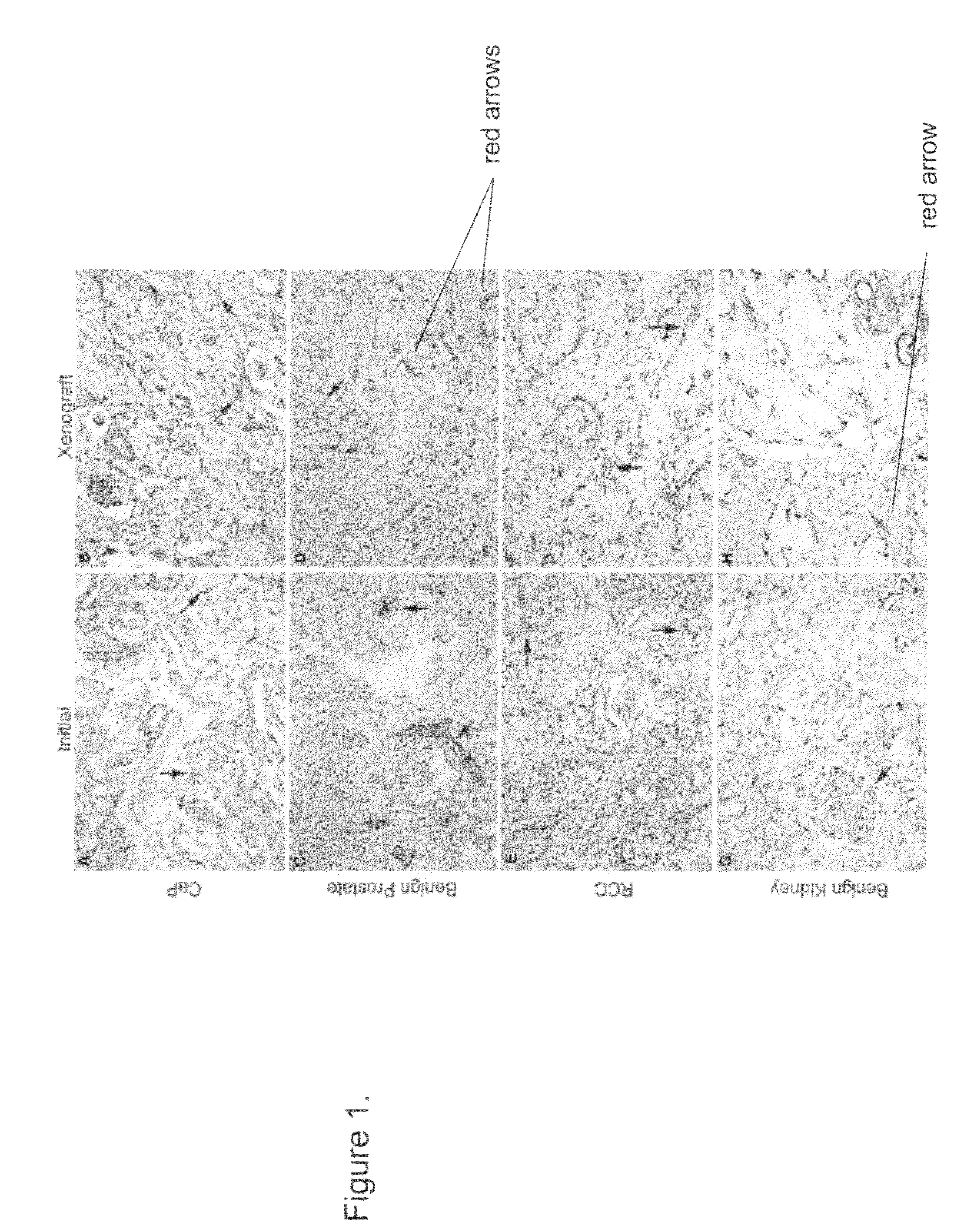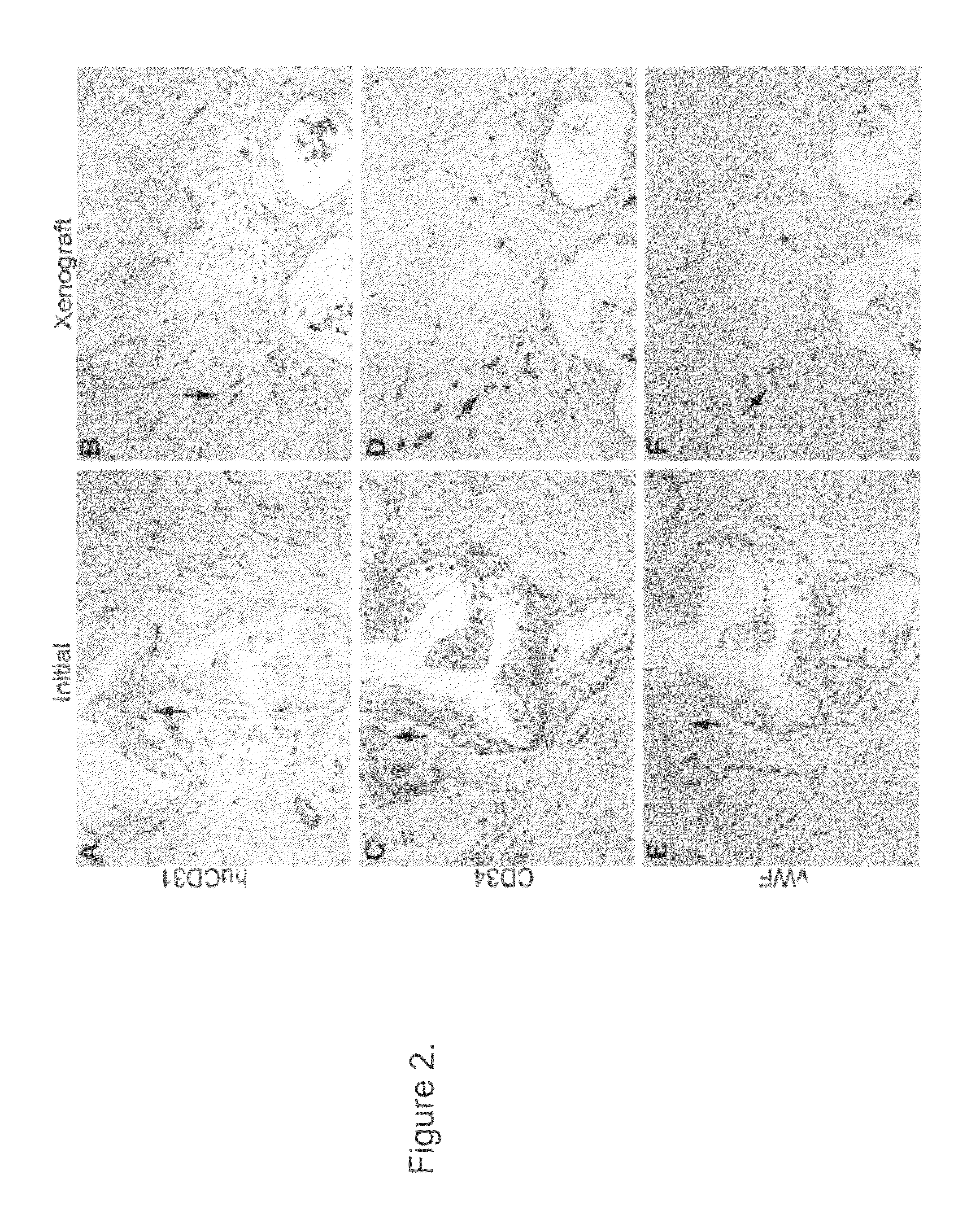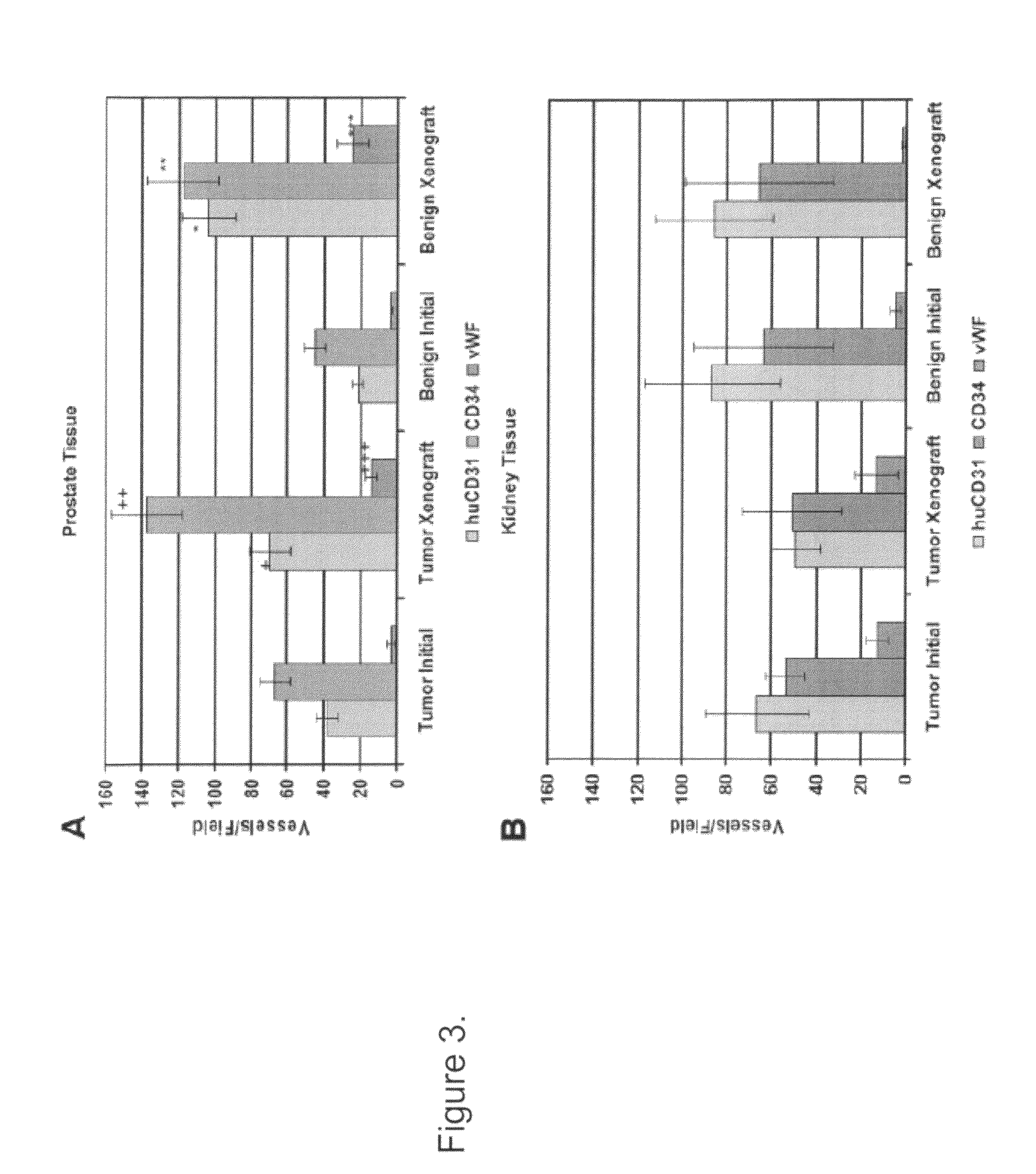Methods for evaluating and implementing prostate disease treatments
a prostate disease and treatment method technology, applied in the field of prostate diseases, can solve problems such as the death of diseased tissu
- Summary
- Abstract
- Description
- Claims
- Application Information
AI Technical Summary
Benefits of technology
Problems solved by technology
Method used
Image
Examples
example 1
[0034]This Example demonstrates making human prostate primary xenografts to provide an in vivo model of human prostate cancer vasculature and angiogenesis, wherein the xenografts comprise blood vessels, and wherein the blood vessels contain a preponderance of human endothelial cells.
[0035]In this Example, angiogenesis in human kidney primary xenografts established from human renal cell carcinoma (RCC) and non-involved kidney tissue, a highly vascular organ and cancer, was compared to angiogenesis in xenografts from the relatively less vascularized prostate. Immunohistochemical identification of the human versus mouse host origin of the endothelial cells, and of human endothelial cell proliferation, in the human prostate and human kidney xenografts demonstrated: 1) the majority of the vessels in primary xenografts of benign and malignant tissue of both organs were lined with human endothelial cells; 2) The mean vessel density (MVD) was increased in both the CaP and benign prostate xe...
example 2
[0052]This Example demonstrates that androgen deprivation induces several rapid but transient changes in the prostatic microenvironment.
[0053]Androgen deprivation therapy was initiated at one month post-implantation of xenografts by castration of the host animal comprising human xenografts obtained as set forth in Example 1, and removal of the testosterone pellet. Control hosts were subjected to mock castration by making and closing a scrotal incision without orchiectomy and without removal of the testosterone pellet. Host animals were euthanized and xenograft tissues collected immediately after androgen deprivation / mock castration (Day 0), or on Days 1, 2, 4, 7, 14 or 28 following androgen deprivation / mock castration. Harvested xenografts were fixed in 10% formalin for a minimum of 24 hrs, after which the fixed tissues were paraffin-embedded. Paraffin blocks were sectioned (5 μm) onto slides.
Perfusion of Host Vasculature
[0054]In preparation for immunofluorescence staining and confo...
example 3
[0074]This Example demonstrates the effects of angiogenesis and androgen deprivation on etiologies of human prostate coagulopathy.
[0075]This Example demonstrates that a pro-coagulative environment exists in the highly angiogenic environment of the primary prostate xenografts prior to androgen deprivation, as evidenced by both tissue factor expression by vascular endothelial cells and deposition of fibrin in the vessels and in the perivascular space, and secondly, that androgen deprivation increases significantly the pro-thrombotic state.
[0076]The data presented in this Example were obtained using the following materials and methods.
[0077]Short Time Point Post-Castration Human Prostate Primary Xenografts (STP-PCX)
[0078]Surgically resected prostate tissue was collected in accordance with the National Institutes of Health guideline on the use of human subjects, and with approval by the IRB at The University of North Carolina at Chapel Hill. Human prostate tissue designated as excess ti...
PUM
| Property | Measurement | Unit |
|---|---|---|
| length | aaaaa | aaaaa |
| length | aaaaa | aaaaa |
| pH | aaaaa | aaaaa |
Abstract
Description
Claims
Application Information
 Login to View More
Login to View More - R&D
- Intellectual Property
- Life Sciences
- Materials
- Tech Scout
- Unparalleled Data Quality
- Higher Quality Content
- 60% Fewer Hallucinations
Browse by: Latest US Patents, China's latest patents, Technical Efficacy Thesaurus, Application Domain, Technology Topic, Popular Technical Reports.
© 2025 PatSnap. All rights reserved.Legal|Privacy policy|Modern Slavery Act Transparency Statement|Sitemap|About US| Contact US: help@patsnap.com



